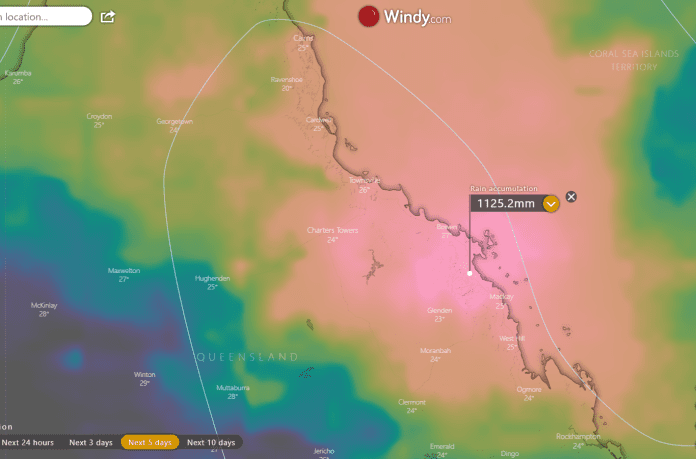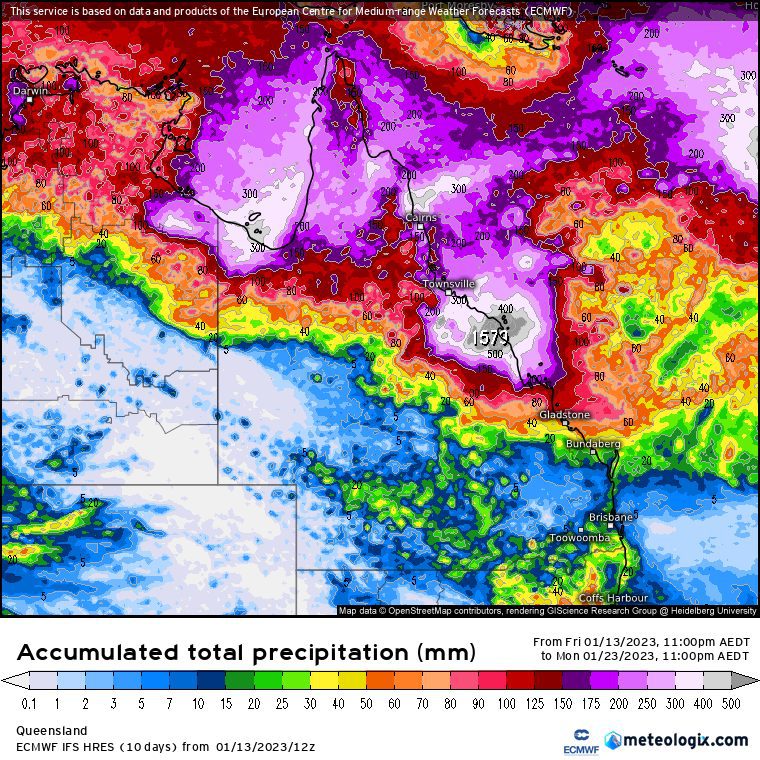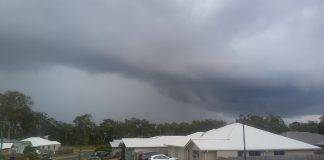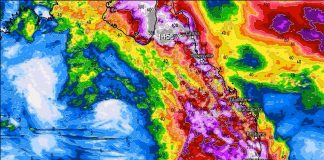
Severe Weather Warning For North and Central QLD 12/01/2023
Extreme Rainfall Event Alert For Areas From Rockhampton to Cairns
FOR EXTREME RAINFALL, POSSIBLY OVER 1500MM OR A METRE AND A HALF OF RAIN
A severe weather event is developing for parts of the central and northern coasts and parts of the adjacent inland areas. A tropical low-pressure system will develop and create a very intense convergence zone. This convergence zone will create very heavy to extreme rainfall over a short period of time.
SEVERE FLASH FLOODING AND POSSIBLE INUNDATION IS A HIGH RISK
An intense rain-bearing system is developing over the far north of the state. The system could generate over a metre of rain or over 1000mm of intense rainfall.
A broad area of low pressure is situated over the north of the state with increasing instability and moisture from the tropics, a monsoonal trough, and a degrading La Nina.
The broad area of low pressure situated over the north of Queensland will remain virtually in the same position over the next 8 – 10 days.
Areas of intense to extreme rainfall will develop with moderate to severe flash flooding over extensive areas.
At this stage, the system is not expected to travel any further south than the Central Coast area as there is ridging in the Tasman Sea and the southern Coral Sea, preventing the system from travelling further south.

Resources
- Tim’s Severe Weather Queensland
- Preparing For Extreme Weather Events In QLD
- QLD Long-term Forecast
- Bureau of Meteorology Warnings
- Live Weather Radar For QLD & Other Maps
About the monsoon in Northern Australia
The monsoon in northern Australia refers to the seasonal weather pattern that brings heavy rainfall to the region. The monsoon season typically lasts from December to April, with the heaviest rains falling in January and February. The monsoon is caused by the movement of a large high-pressure system over the Indian Ocean, which pushes warm, moist air towards the Australian coast.
The northern Australian monsoon significantly impacts the region’s ecology and economy. The heavy rains replenish water sources and provide the necessary moisture for crops and other vegetation to grow. However, the monsoon also brings the risk of flooding and landslides, which can damage infrastructure and disrupt transportation and other services.
In recent years, the northern Australian monsoon has become increasingly unpredictable, with some years experiencing stronger monsoons and others experiencing weaker ones. Scientists are still studying the causes of this variability, but some possible factors include changes in ocean temperatures and the El Niño-Southern Oscillation (ENSO) phenomenon.
Climate change may also be playing a role in the monsoon’s unpredictability. Despite this unpredictability, the monsoon remains an important aspect of the northern Australian climate and economy, and efforts are ongoing to understand and predict its behaviour better.
About the La Nina and the weather effects on Queensland
Understanding the La Niña-Southern Oscillation and its impact on Queensland weather
La Niña is a climate phenomenon that occurs when the surface waters in the tropical Pacific Ocean become cooler than normal. It is the opposite of El Niño, which occurs when the surface waters are warmer than normal.
La Niña can have a significant impact on weather patterns around the world, including in Queensland and Australia. During a La Niña event, Queensland can expect increased rainfall, leading to flooding and other weather-related hazards. The increased rainfall can also benefit agriculture, but it can also cause damage to crops and infrastructure.
La Niña and its effect on Queensland’s agriculture industry
La Niña can have a significant impact on Queensland’s agriculture industry. The increased rainfall can provide much-needed water for crops, but it can also cause damage to infrastructure and make it difficult for farmers to access their land.
La Niña can also lead to an increased risk of pests and diseases, which can further damage crops. Despite these challenges, the increased rainfall can also lead to higher crop yields, which can benefit farmers.
The potential risks and hazards of La Niña for Queensland’s coastal communities
La Niña can also bring severe weather and hazards to Queensland’s coastal communities. The increased rainfall can lead to flooding, landslides, and other natural disasters. Also, La Niña can lead to increased storm activity in the Pacific Ocean, bringing strong winds and high waves to the coast.
These hazards can damage homes and infrastructure and can also put lives at risk. Therefore, it is important for coastal communities to be aware of the potential risks and hazards associated with La Niña and to take appropriate precautions.




























































